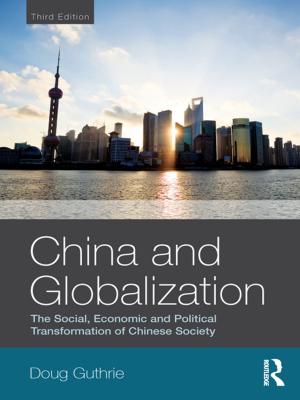Crossing Borders
Regional and Urban Perspectives on International Migration
Nonfiction, Social & Cultural Studies, Social Science| Author: | ISBN: | 9780429872617 | |
| Publisher: | Taylor and Francis | Publication: | December 17, 2018 |
| Imprint: | Routledge | Language: | English |
| Author: | |
| ISBN: | 9780429872617 |
| Publisher: | Taylor and Francis |
| Publication: | December 17, 2018 |
| Imprint: | Routledge |
| Language: | English |
Published in 1998. Migration patterns at the global level have become more complex, affecting more countries, more people and for a greater variety of reasons. Consequently, international migration is receiving increasing attention throughout the world. Migration is an inherently spatial phenomenon. But while the spatial patterns themselves have been described in recent surveys of global contemporary international migration, the causes and consequences of the spatial patterns have received surprisingly little systematic attention. Often migration is seen just from a host country perspective, or from a sending country perspective, without explicit consideration of the sub-national origin and destinations of the flows or linkages between countries. It is well known that migration flows follow certain gravity-like properties, that there is chain migration, that certain regions attract more migrants than others, that migrants are highly urbanised, and that within urban areas there are also concentrations of migrants leading to a reshaping of the urban landscape. However, such observations are often the result of purely descriptive research or case study research. Consequently, there is still a need for an integrated multi-disciplinary study of the spatial impact and the resulting socio-economic and political issues concerning migration. This book aims to fill this gap by bringing together a collection of papers which are primarily concerned with the spatial impact of contemporary international migration patterns, or with related issues. The topics of the papers are wide ranging and the focus varies from broad international perspectives to specific urban areas. Two general themes run through the papers. The first of these is that migration is an inherently dynamic process which may have either equilibrating or self-reinforcing (cumulative) effects. The importance of considering international migration in a dynamic context has come to the fore in several theoretical frameworks which are available in the literature to study this phenomenon. The second major theme of the book is the emphasis on the importance of personal networks in shaping international migration patterns, leading to pronounced clusters of (urban) areas from which migrants are drawn and of migrant settlement.
Published in 1998. Migration patterns at the global level have become more complex, affecting more countries, more people and for a greater variety of reasons. Consequently, international migration is receiving increasing attention throughout the world. Migration is an inherently spatial phenomenon. But while the spatial patterns themselves have been described in recent surveys of global contemporary international migration, the causes and consequences of the spatial patterns have received surprisingly little systematic attention. Often migration is seen just from a host country perspective, or from a sending country perspective, without explicit consideration of the sub-national origin and destinations of the flows or linkages between countries. It is well known that migration flows follow certain gravity-like properties, that there is chain migration, that certain regions attract more migrants than others, that migrants are highly urbanised, and that within urban areas there are also concentrations of migrants leading to a reshaping of the urban landscape. However, such observations are often the result of purely descriptive research or case study research. Consequently, there is still a need for an integrated multi-disciplinary study of the spatial impact and the resulting socio-economic and political issues concerning migration. This book aims to fill this gap by bringing together a collection of papers which are primarily concerned with the spatial impact of contemporary international migration patterns, or with related issues. The topics of the papers are wide ranging and the focus varies from broad international perspectives to specific urban areas. Two general themes run through the papers. The first of these is that migration is an inherently dynamic process which may have either equilibrating or self-reinforcing (cumulative) effects. The importance of considering international migration in a dynamic context has come to the fore in several theoretical frameworks which are available in the literature to study this phenomenon. The second major theme of the book is the emphasis on the importance of personal networks in shaping international migration patterns, leading to pronounced clusters of (urban) areas from which migrants are drawn and of migrant settlement.















